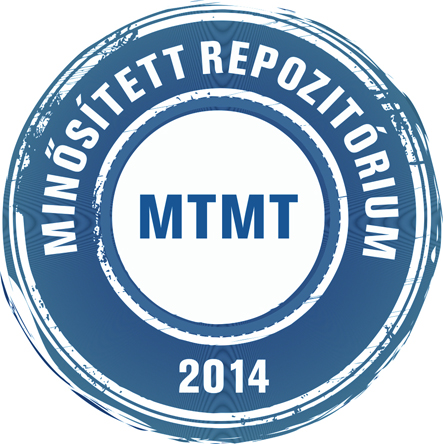Le, Duong Hung Anh Development of new insulation material from sugarcane bagasse and examination of the insulation effect depending on temperature and humidity. Doktori értekezés, Soproni Egyetem.
|
PDF
Theses Booklet (Final).pdf Download (1MB) |
|
|
PDF
DISSERTATION.pdf Download (3MB) |
|
|
PDF
Theses Booklet (Final).pdf Download (1MB) |
|
|
PDF
DISSERTATION.Text.Marked.pdf Download (3MB) |
Absztrakt (kivonat)
The development of thermal insulation materials derived from natural fiber resources used in buildings and constructions has been currently solving the global energy consumption and preservation. The Ph.D. research works mainly focus on the following problems: the main factors influencing the thermal conductivity coefficient of building insulation materials; the fabrication of binderless insulation materials made of natural fiber and their thermal conductivity under the effect of temperature and relative humidity; the water absorption of natural fiber-based insulation materials regarding the variations of relative humidity; the relationship between thermal conductivity value and their influencing factors; numerical simulations of the heat and moisture transfer in multi-layered insulation materials used as an exterior wall for building envelopes. The findings from the Ph.D. research works can be figured out as follows: firstly, the novel thermal insulation material made from sugarcane bagasse fiber was produced without any binders or additives showing a potentiality for building insulation applications due to their low thermal conductivity coefficients which were found of 0.04–0.055 W/(m·K). Secondly, the thermal conductivity values of natural fiber-based insulation materials measured at different operating temperatures range from -10 to 50 °C using the heat flow meter method. Accordingly, the thermal conductivity values of binderless coir fiber insulation boards recorded from 0.037 to 0.066 W/(m·K) while the values found for binderless bagasse fiber insulation boards were in the range of 0.041–0.057 W/(m·K). In addition, the percentage rate of changes in the thermal conductivity values of binderless bagasse fiberboards was recorded from 16 to 20% demonstrating that these boards had a lower heat consumption according to the European-certified reference materials for thermal conductivity measurement. Thirdly, the practical examination of relative humidity dependence of thermal conductivity demonstrated the great influence of this factor in thermal performance. The thermal conductivity values of three samples of binderless coir fiber insulation boards were recorded in the range of 0.049–0.066 W/(m·K), 0.058–0.094 W/(m·K), and 0.069–0.107 W/(m·K) regarding the humidity range of 16.5–90%, whereas the values of thermal conductivity of three specimens of binderless bagasse fiber insulation boards were found of 0.044–0.049 W/(m·K), 0.046–0.052 W/(m·K), 0.058–0.069 W/(m·K) when the relative humidity increased from 33 to 96%. As a result, the obtained thermal conductivity values provided a better thermal insulated quality than that of other bio-based products and composites. On the other hand, the water absorption of natural fiber insulation materials related to relative humidity was also investigated using the climatic chamber and the desiccator method. Results showed a similar sorption behaviour for all tested specimens in that they exhibited a typical behaviour of natural fibrous materials with a high increase of water absorption above 75% relative humidity. The water uptake of binderless bagasse insulation boards in regards to the saturated level of 75% relative humidity was carried out to examine the minimum time for the equilibrium state to be obtained. These results have contributed to the investigation of improving the hygrothermal and durability performance of natural fibrous insulation materials over time. Last but not least, numerical simulations of the effect of heat and moisture on the effective thermal conductivity of the multi-layered insulation materials and the moisture storage capacity related to the variations of ambient relative humidity also contribute to further experimental investigation in the thermal efficacy of the next generation of building insulation materials.
| Mű típusa: | Disszertáció (Doktori értekezés) |
|---|---|
| Doktori iskola: | Faipari Mérnöki és Kreatívipari Kar > Cziráki József Faanyagtudomány és Technológiák Doktori Iskola |
| Tudományterület / tudományág: | műszaki tudományok > anyagtudományok és technológiák |
| Angol cím: | Development of new insulation material from sugarcane bagasse and examination of the insulation effect depending on temperature and humidity |
| EPrint azonosító (ID): | 854 |
| Publikációban használt név : | Le, Duong Hung Anh |
| A mű MTMT azonosítója: | 33802318 |
| Dátum: | 02 máj 2023 13:41 |
| Utolsó módosítás: | 25 júl 2023 07:45 |
| URI: | http://doktori.uni-sopron.hu/id/eprint/854 |
Actions (login required)
 |
Tétel nézet |


 Repozitóriumi letöltési statisztika
Repozitóriumi letöltési statisztika Repozitóriumi letöltési statisztika
Repozitóriumi letöltési statisztika
